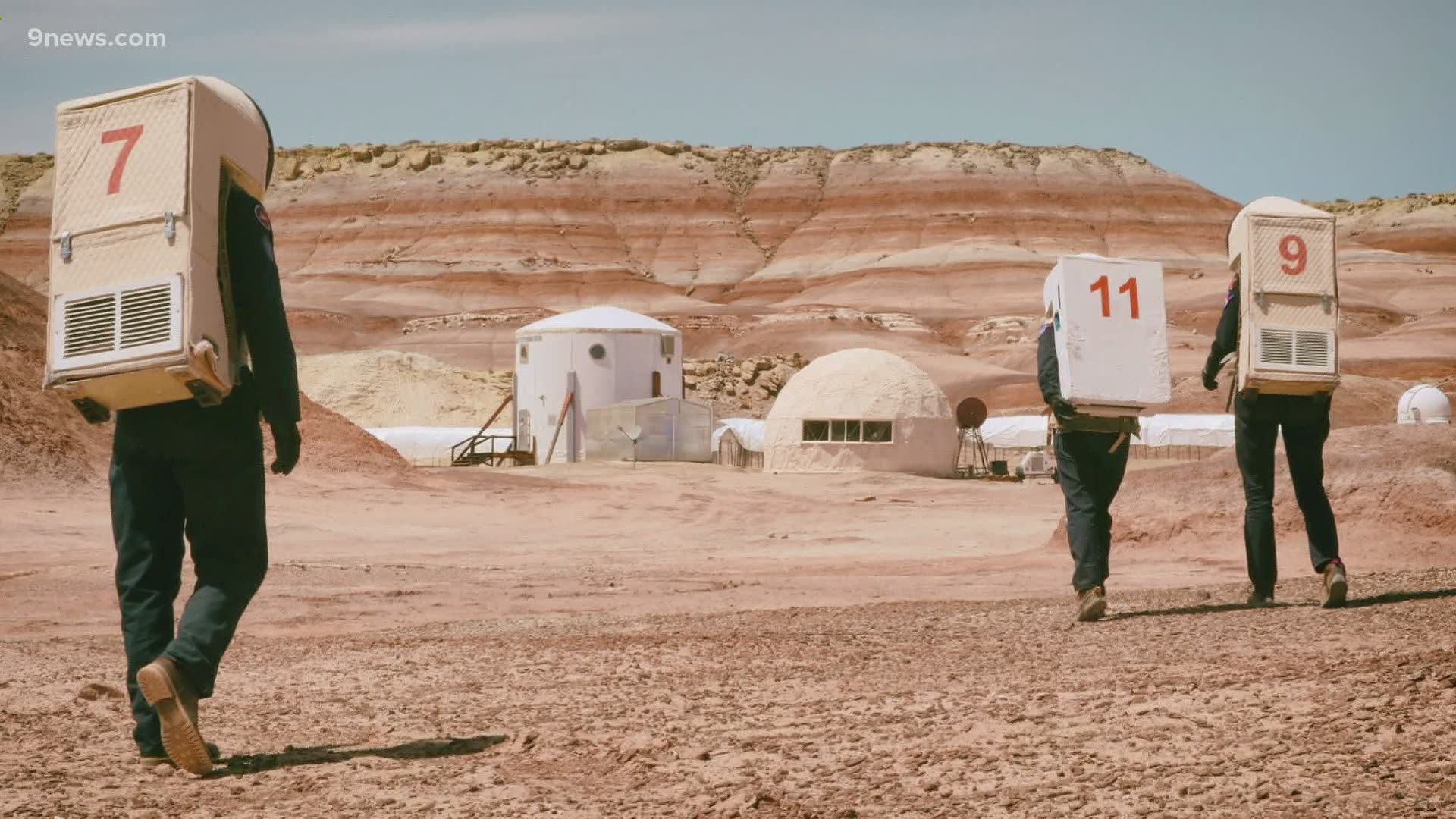HANKSVILLE, Utah — The red cliffs just west of Hanksville, Utah could easily be described as alien. It's the perfect setting to simulate a mission to the red planet of Mars.
CU Boulder grad student Shayna Hume, just spent two weeks in the desert with five other aspiring astronauts. She said the environment resembled Mars so closely, that it was easy to get into character.
“We would see plateaus, we would see strata, these beautiful red colors all along the rock," the 24-year-old said. "And one of us would stand very still and say wow if I didn’t know any better, I would say this is Utah. It’s just gorgeous.”
Astronauts call it an analog mission. Simulating life in space while in an Earth environment.
The Mars Desert Research Station is a replica space habitat in Utah, run by the Mars Society. The mission is to pursue the technology, operations, and science required for human space exploration.
Southeast Utah was chosen for its Mars-like terrain. Hume said there were even dust storms in the first few days of the mission.
“It really feels like you could be walking out onto the surface of another planet," said Hume. "It feels eerie, it feels empty in the most incredible way.”
The crew documented some of their mission on social media under the handle Red Planet People. They are active on Instagram, Facebook, and Twitter.
With the exception of Earth gravity, everything else in the simulated two-week mission was all Mars. From the spacesuits to the science experiments. There was no contact with the outside world, no Netflix, and grocery stores.
“There really wasn’t time to breath and relax," said Hume, who was the First Officer of the group. "It felt like we were on the job. We had a whole list of things to do.”
The analog Mars habitat was shut down during the bulk of the pandemic. This was the first crew in more than a year.
Hume said these simulations help individuals prepare for careers in space, but more importantly it helps the astronaut community know what works and what doesn’t when it comes to life in space.
Living on Mars might still be distant, but she said the moon is close.
“So, 15 years from now I think we’ll be living and working on the moon and I really hope to be working on how to improve that life,” she said.
SUGGESTED VIDEOS: Feature stories

